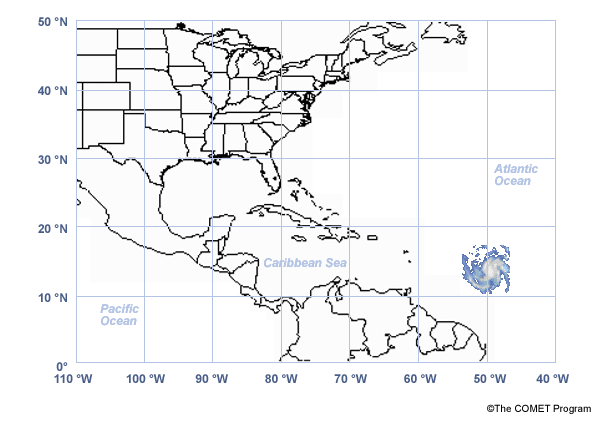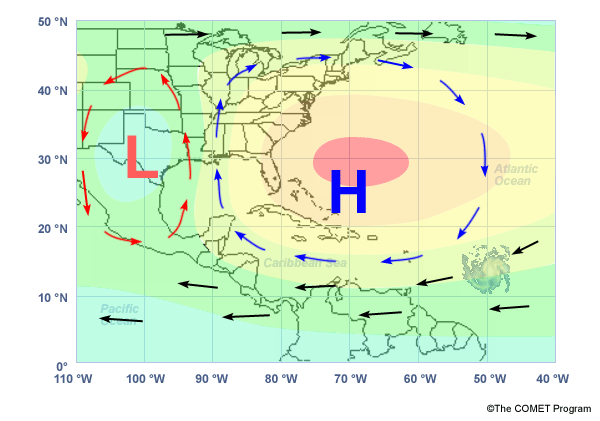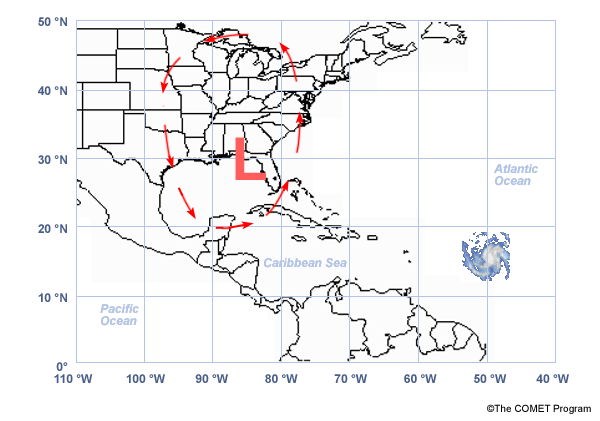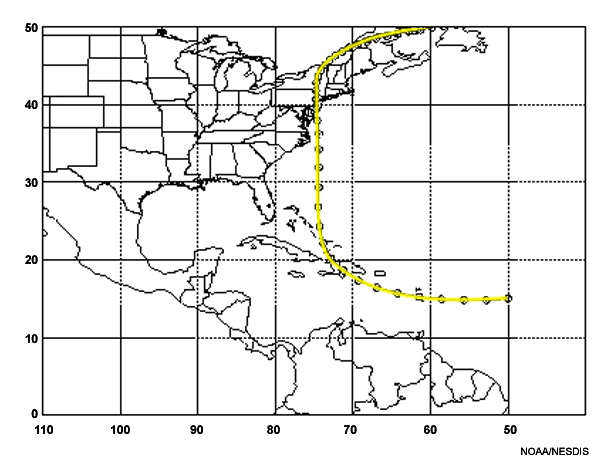
Aim a Hurricane: Description-Links Page
A map showing the United States and the northern third of South America. A hurricane is in the Atlantic Ocean about 1800 miles southeast of the tip of Florida.
The same map with the hurricane in the Atlantic Ocean and a low pressure system centered over Texas. Red arrows show that the winds blow counterclockwise around the low. The wind pattern around the low extends from southern Mexico to Nebraska.

The same map with a low pressure system to the left over Texas, surrounded
by counterclockwise red arrows. The high is to the right, southeast of Florida.
Blue arrows circle the high in a clockwise direction. These winds swirl around the high from the Caribbean to New England. Black arrows indicate the wind flow from east to west at the southern edge of the two pressure systems and in the area where the hurricane sits in the Atlantic.

The same map as before with the low pressure system over Texas, the high southeast of Florida, and the hurricane on the high's southeastern edge.
A map showing the track of the hurricane. A yellow line starts in the Atlantic Ocean and then traces a path the the west. When the line gets to the Yucatan Peninsula, it turns north. Circles along the line indicate the position of the hurricane at various times.
The same initial map as in the first example. It shows the United States and the northern third of South America. A hurricane is in the Atlantic Ocean about 1800 miles southeast of the tip of Florida.

The same map with the hurricane in the Atlantic Ocean and a low pressure system, this time over the eastern Gulf of Mexico, just west of Florida. Red arrows represent the counterclockwise wind flow over this low pressure area. The winds reach from the Yucatan Penninsula to the Great Lakes.
The same map with the hurricane in the Atlantic Ocean, the low pressure system over the eastern U.S. and Gulf of Mexico, and a high pressure system in the Atlantic Ocean. The hurricane is within the high pressure area, on its southern edge. Blue arrows indicate the clockwise wind pattern around highs, and these winds extend from the north coast of South America to Nova Scotia in Canada. Black arrows indicate winds blowing from the east to west on the southern edges of both the low and the high.

A map showing the track of the hurricane. A yellow line starts in the Atlantic Ocean and then traces a path to the west. When the line gets to Haiti, it turns north. Circles along the line indicate the position of the hurricane at various times.